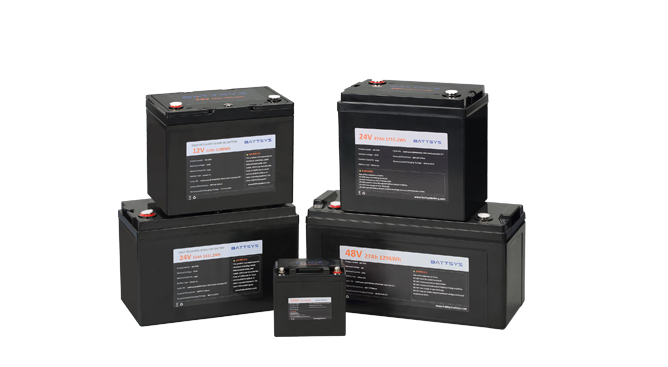Reasons for lithium batteries catching fire and self igniting.
Many people often see safety accidents caused by lithium batteries, giving the impression that the most important ones are explosions and fires caused by lithium batteries. A 50 degree electric vehicle, if completely out of control and catches fire, releases up to 100 million joules of energy, equivalent to the energy released by 43 kilograms of TNT explosive. Why do lithium batteries catch fire and self ignite?
The direct cause of lithium battery fire is the uncontrollable heat of rechargeable batteries. The so-called thermal runaway refers to the internal short circuit caused by various stimuli in the battery, resulting in a temperature rise of thousands of degrees inside the battery. The flammable electrolyte boils and sprays out, and burns when it comes into contact with air.
At present, there are three main reasons for short-circuit faults in rechargeable batteries: mechanical runaway, electrochemical runaway, and temperature runaway.

The most common thing is that the rechargeable battery is crushed or nailed, which can cause the membrane to be pierced, and the positive and negative plates immediately connect to the internal short circuit, releasing a large amount of heat.
The most typical example is a school bus accident in Shenzhen, which caused the battery pack of a large truck to be overcrowded, resulting in a large-scale internal short circuit fault, and ultimately the truck was burned into an empty shell.
If the reasonable layout of rechargeable batteries is not scientific, long-term applications may also encounter problems. The original Samsung SDI lithium battery was used, but due to the small room space, it was handed over to the rechargeable battery, resulting in a current short circuit fault where the external negative electrode plate was compressed and deformed, ultimately leading to several fire safety accidents.
There are many reasons why electrocatalysis cannot be controlled, and poor quality rechargeable batteries are the main cause of diseases. At the same time, when there is a problem with the SDI lithium power supply, put production capacity pressure on the ATL lithium power supply. As a result, the quality of these rechargeable batteries has been reduced, causing the residual amount of negative copper and capillary composition inside the rechargeable batteries to exceed the standard.
In battery powered vehicles, excessive battery charging and high current fast charging are the main reasons why they cannot be controlled by photocatalysis.
When non-standard car charging stations are used for battery vehicles, the charging stations may absorb high currents that lithium-ion cars cannot withstand. In rechargeable batteries, the charging speed is too fast, causing lithium-ion batteries to produce dendritic twins in the negative layer. Twinned crystals are thin and hard like needles, and when they grow to a certain length, they can damage the membrane and cause short circuit faults.
It is worth mentioning that in the non compliant management of car charging piles, there will be too many batteries being charged. When the charging battery is fully charged and the battery is recharged, the negative potential of the charging battery will insert a large number of lithium-ion batteries. When the negative potential exceeds the maximum carrying capacity, the battery will collapse, leading to short circuit faults inside the battery drum. A recent accident in Dongguan caused an electric vehicle to catch fire, which may be related to overcharging and fast charging.
The key is that lithium is very cold. When lithium is charged at high temperatures, the positive and negative films will generate additional reflections, releasing carbon dioxide and extra heat. The influence of various heat sources can easily lead to membrane dissolution, resulting in large-scale short-circuit faults. It's summer now, and many battery chargers charge their batteries under the hot sun. If their heat pipes don't work, it's easy for the heat generated by the batteries to get out of control.
Rechargeable batteries are dangerous and even life-threatening, so car and mobile phone manufacturers have come up with ways to maintain batteries.
In the 3C rechargeable battery industry, since the self injection 7 explosion, lithium-ion batteries have evolved from lithium-ion batteries to polymer lithium-ion batteries. Previously, lithium-ion batteries in flammable liquid lithium batteries have been replaced by suspected colloidal lithium-ion battery electrolytes. Even if the battery is disconnected, most of them have already started and will not explode.
On the side of the battery car, due to the temporary inability of the rubber like power lithium battery to meet the loading requirements, only one method can be found to maintain the battery as well as possible.
Lithium is afraid of being poked and squeezed, so anti slip raw materials are added to the outside of the battery, and the bottom is coated on the coating.
Lithium is afraid of fast charging and overcharging, so a smart management system for rechargeable batteries should be developed to synchronously control the charging current and monitor the health of each battery.
Lithium is sensitive to cold, so create a water cooling system software for lithium to prevent overheating.
In the new national industrial standards, the heat generated by lithium-ion batteries in battery vehicles cannot be controlled to ensure no fire and no explosion within five minutes. If the battery car in your seat catches fire, quickly cover your mouth and nose, try to get off the car, get off more than 15 meters without attempting to put out the fire, and you have a chance to escape the battlefield after the battery catches fire.
